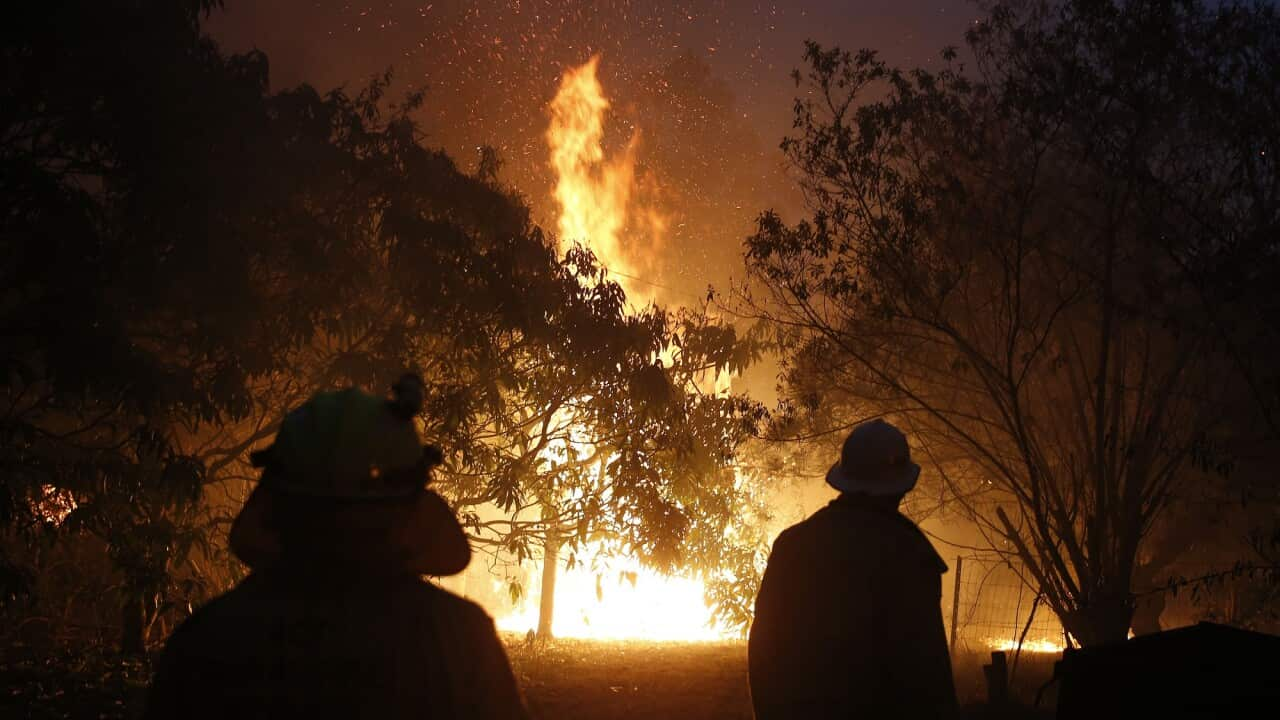TRANSCRIPT
(The sound of fire engines)
A dark red landscape blanketed in thick smoke, as crews battled to contain the fires.
The scenes from the 2019-2020 Black Summer bushfires will never be forgotten by those who survived its ferocious impact.
Blue Mountains resident Jochen Spencer vividly remembers when the fires came to his community.
"I was in the Berambing - with other people - when the back burn came through. We hid, sheltered for our lives. It was a very traumatic experience; and I think that spurred on a campaign to bring more awareness to the issue of the back burns."
In total, the bushfire season lasted eight months, spanning across the Australian continent, and claiming the lives of 34 people.
25 of them, including seven firefighters, were killed in New South Wales.
Four years after the fires were finally extinguished, the state coroner has released a 700-page report.
Coroner Teresa O'Sullivan told the court "the scale of loss is difficult to truly comprehend".
She said it was "the largest recorded area of land burnt by bushfires in the state’s history", with "a devastating impact upon First Nations peoples".
The report's 28 recommendations were directed to the Rural Fire Service, New South Wales Police, and electricity provider Essential Energy.
They include: the need for better training, better guidelines for aerial firefighting units, improvements to communications systems, and early warning and alert systems.
The coroner also told the court: "more work is needed in light of the ongoing and intensifying climate risks. The need to adapt to climate change cannot be understated."
These findings and recommendations marked the end of an inquiry spanning 78 days over two years, which gathered 44-and-a-half thousand pages of evidence.
But some impacted community members, like Blue Mountains resident Kooryn [[Koo-rin]] Sheaves, say they still want answers.
"This inquiry was definitely a missed opportunity. It is devastating to see that these recommendations don't address the needs of communities to be better prepared for our changing climate."
A group of residents from the Blue Mountains gathered to listen to the coroner's findings in Sydney.
Jochen Spencer was one of those who left the courtroom feeling disappointed, saying he felt ignored.
"Not having residents that were so traumatised and had issues with how this happened not just with the fire, but the entire recovery process, and the issues that they've been dealing with... Not having their voice heard at what is a coronial inquiry. There's meant to be therapeutic justice here, there's meant to be some resolution; and I don't think we feel that that has actually occurred at all."
Their demands included more localised control of emergency responses, and a quicker process to investigate bushfire disasters.
Bill Shields from the Independent Bushfire Group welcomed the report's findings, but says the scale of the investigation meant it was impossible to address all the issues.
"We believe that the answers are there, and there's an inspector general of emergency services in Victoria. There's one in Queensland. And Fraser Island fire, there was a report out in eight months, warts and all. In South Australia, they employed a consultant to the Kangaroo Island fire, and there was a report out in nine months, warts and all, and that's all we're after."
The group says their calls for accountability have been left unanswered.
The coroner says the point of this inquiry was not to assign blame - and she acknowledged the ongoing trauma felt by affected communities.













